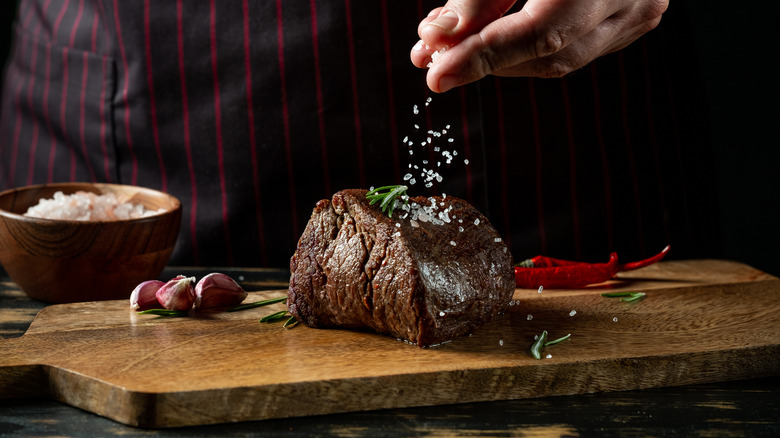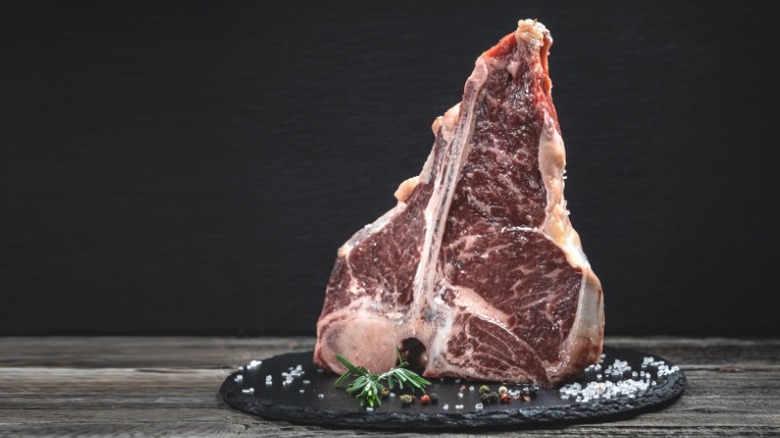The Reason Your Steak Is Gray
If you've ever eaten a banana with a spotted peel, or guacamole that has browned on the surface due to being left out too long, you know that color isn't always an indicator of bad tasting food. Despite the fact that a little bit of color change is usually harmless, we eat with our eyes first, and gray steak for example, isn't exactly appetizing. Fortunately however, grayness after cooking isn't a sign that there's something wrong with the meat, Cook's Country explains. Instead it's a result of the steak being a little too wet before you put it on the grill or stove.
In order to get that signature brown crust and sear, it's important to remove any excess moisture from the meat, which can easily be done by blotting it with a paper towel beforehand. According to Prevention, if you skip this step, the residual liquid will cause the steak to steam rather than grill, and a steak won't brown if it's steamed.
Steak can also turn gray prior to cooking
A steak that has turned gray after cooking isn't the same as a steak that was already gray in its raw state. According to My Chicago Steak, this form of graying, a process known as metmyoglobin, occurs when a protein in the muscle tissue called myoglobin interacts with oxygen. "Myoglobin's chemical compound contains iron, which after a few days of oxygen exposure, will oxidize," the company explains. The result of metmyoglobin is a loss of color that makes your steak appear gray instead of red, even before it hits the grill.
Gray steak, however, isn't necessarily unsafe to eat, as color varies across different cuts of beef. Flank steak, for example, is naturally redder than strip steak. Insider further elaborates that gray steak is actually a fairly common occurrence, and it can be cooked and consumed safely, provided that it isn't slimy or giving off an unpleasant odor.

